HP EX900 Plus 1TB Performance Testing
We test using both the default smaller test size as well as larger test sets on our benchmarks. This allows us to see the difference between lighter and heavier workloads.
CrystalDiskMark x64
CrystalDiskMark is used as a basic starting point for benchmarks as it is something commonly run by end-users as a sanity check.
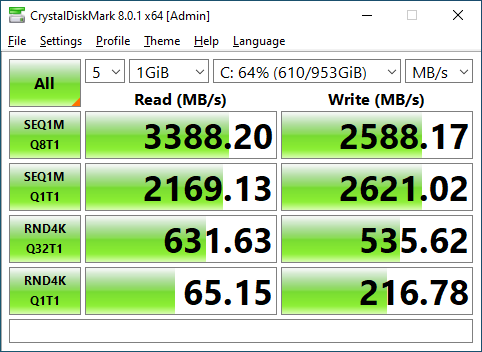
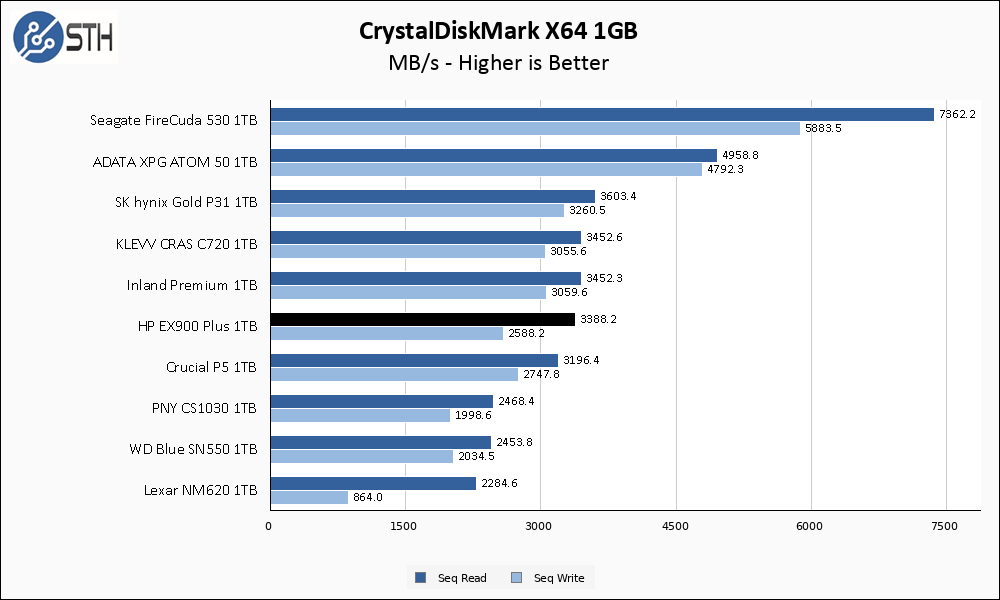
HP quoted 3400 MB/s read and 3900 MB/s write, and unfortunately fell quite a bit short on the write side of the house. The EX900 Plus falls around 300 MB/s short of the mark in the test that drives historically perform the best in. With that said, viewed outside the perspective of keeping performance promises the results turned in here are still mostly fine and outpace previous DRAM-less PCIe 3.0 SSDs.
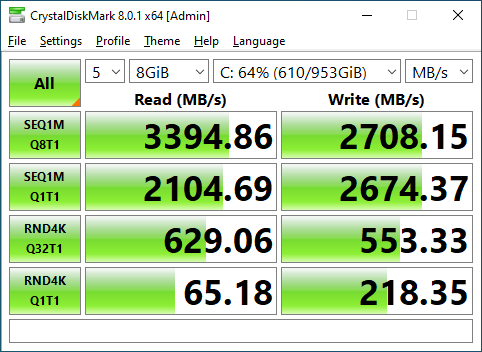
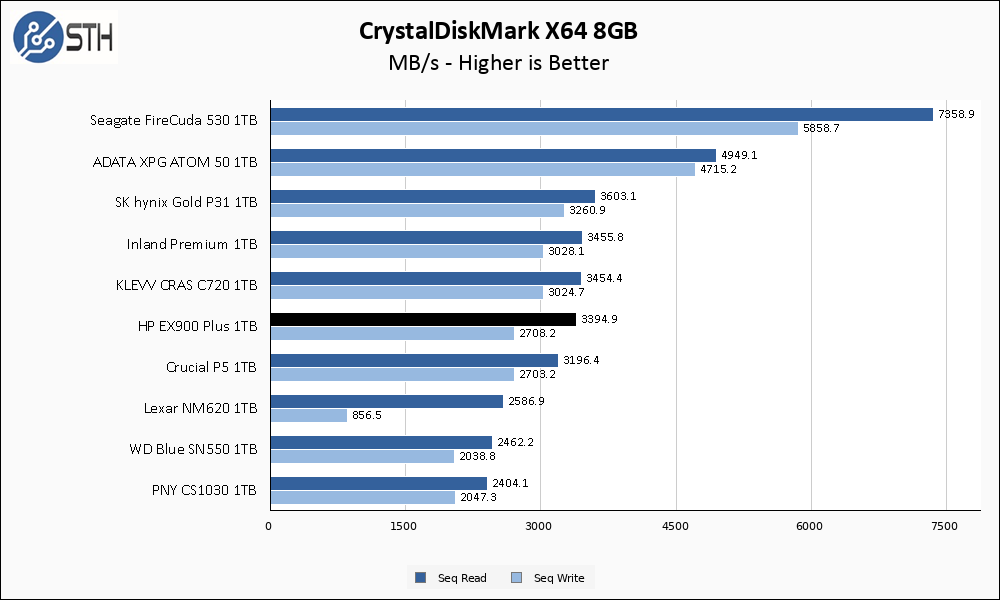
Performance improves a bit on the larger CrystalDiskMark test, and the EX900 Plus is now within 200 MB/s of meeting its advertised sequential write speed. Read speed remains right on the money, and performance overall is good for a PCIe 3.0 drive.
ATTO Disk Benchmark
The ATTO Disk Benchmark has been a staple of drive sequential performance testing for years. ATTO was tested at both 256MB and 8GB file sizes.
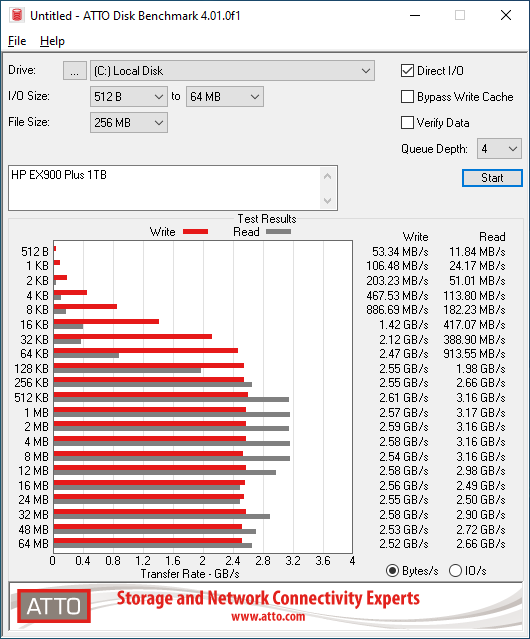
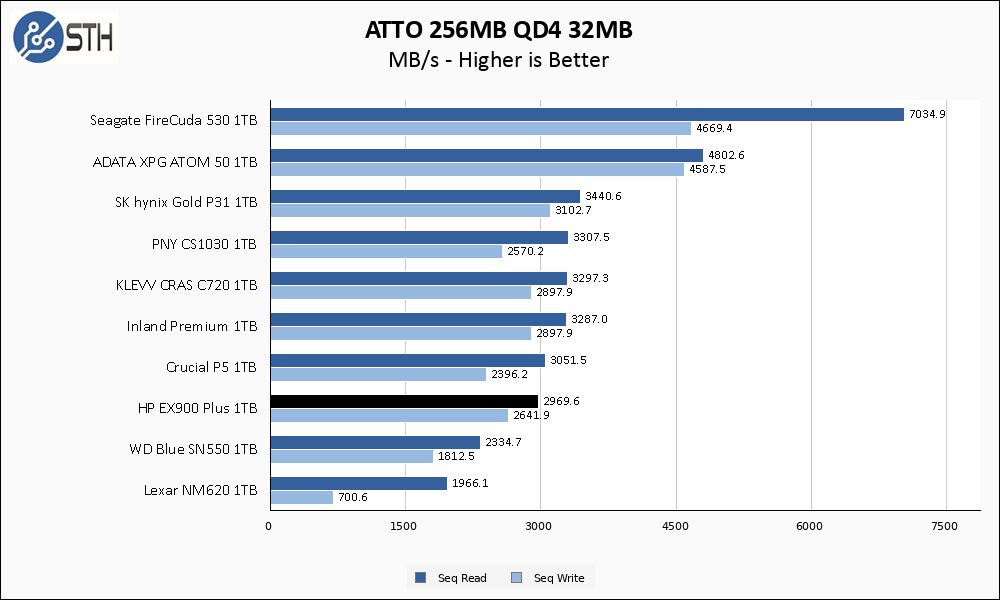
Most drives perform worse in ATTO than in CrystalDiskMark, and the HP EX900 Plus is one such drive. Read speed takes a decent dip compared to CDM, while write speeds hold fairly well. I also see a bit of variation over the full length of the test run, though essentially only on the read results.
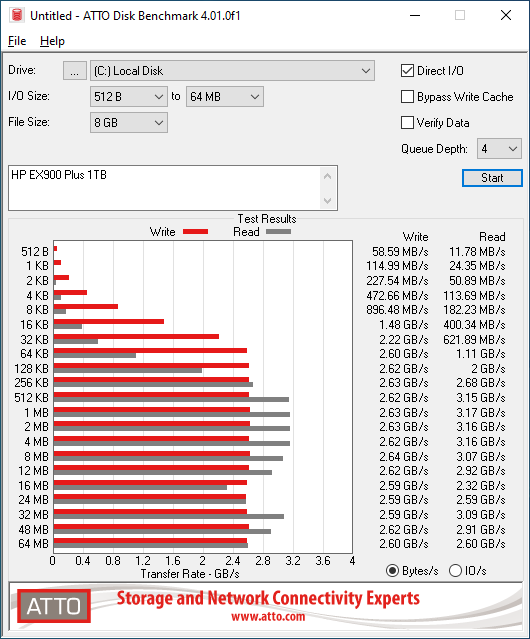
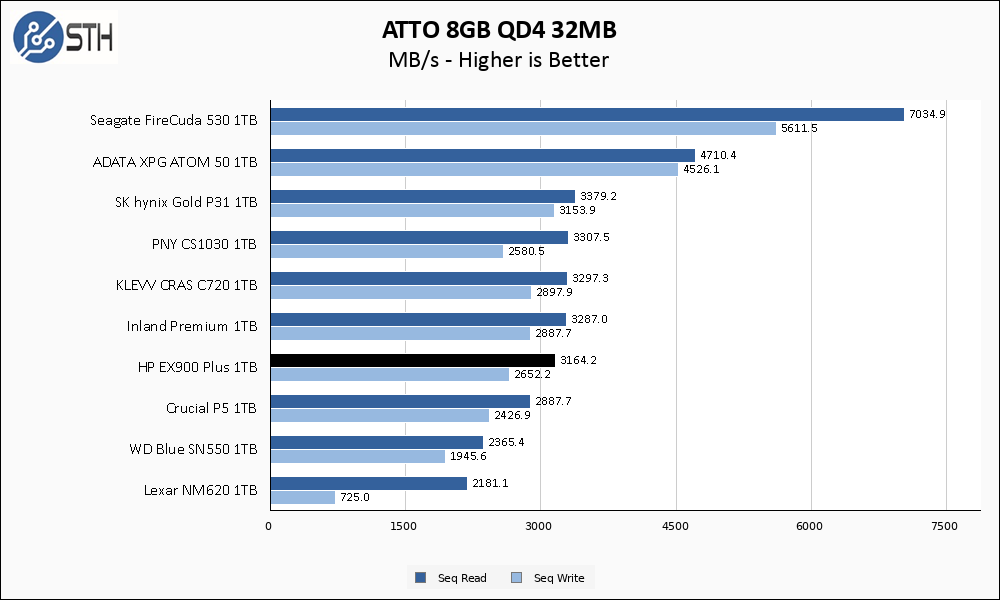
Once again the HP EX900 Plus performs better on the larger test set, slightly improving overall compared to the first ATTO test. There is still a decent bit of read speed variation, but write speed remains consistent.
Anvil’s Storage Utilities
Anvil’s Storage Utilities is a comprehensive benchmark that gives us a very in-depth look at the performance of drives tested. This benchmark was run with both a 1GB and 8GB test size.
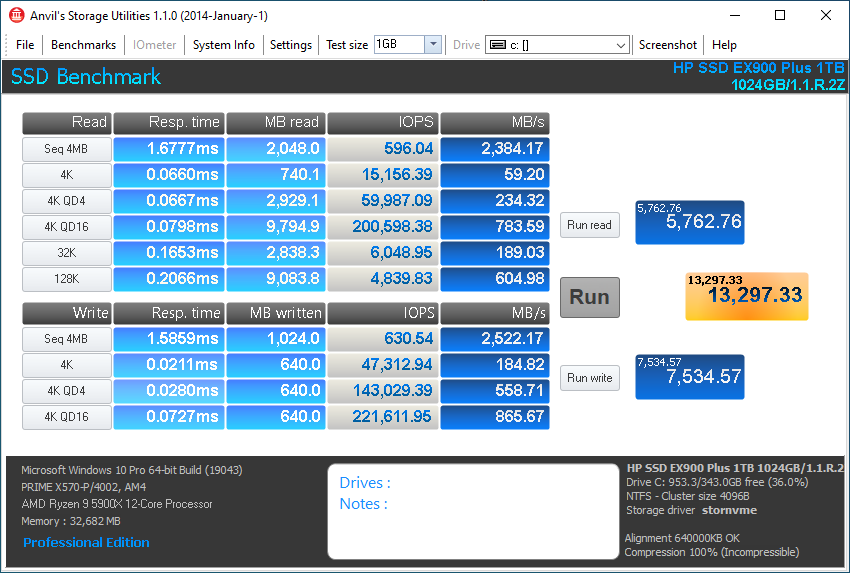
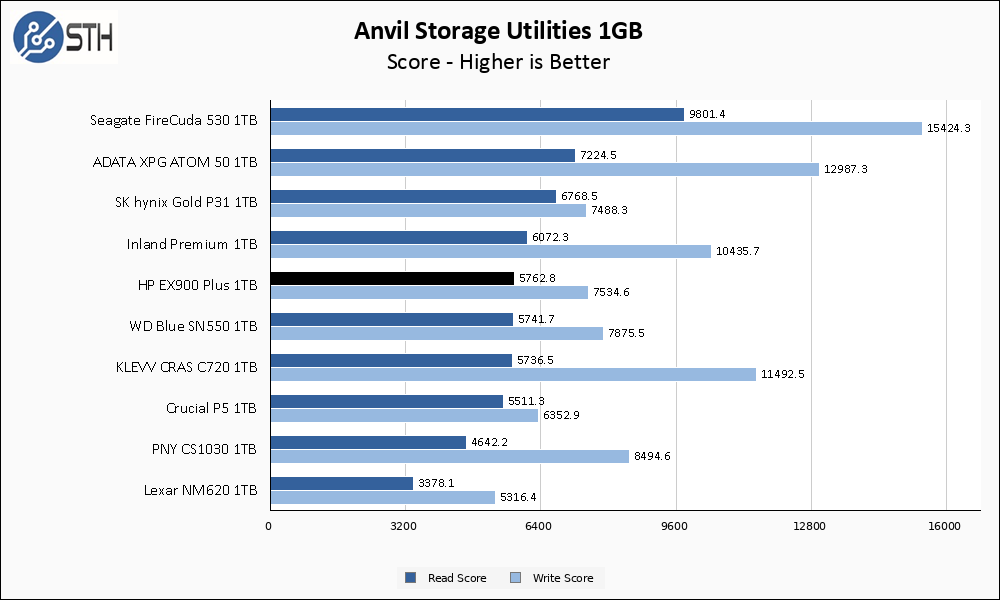
Anvil performance for the HP EX900 Plus is very middle-of-the-pack. Write performance is generally fine, though for the first time dips below the similarly DRAM-less WD Blue SN550. Read performance is also a step behind other high-performance PCIe 3.0 drives like the Inland Premium and SK hynix Gold P31.
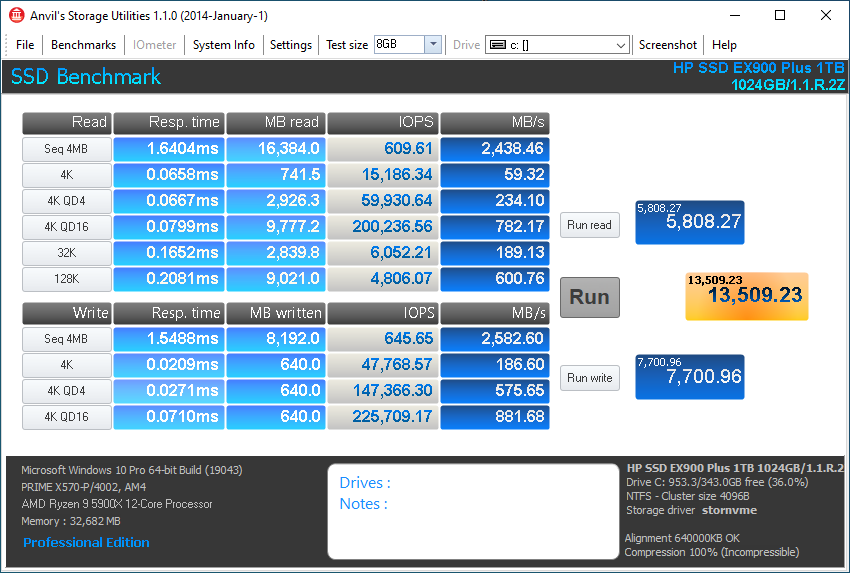
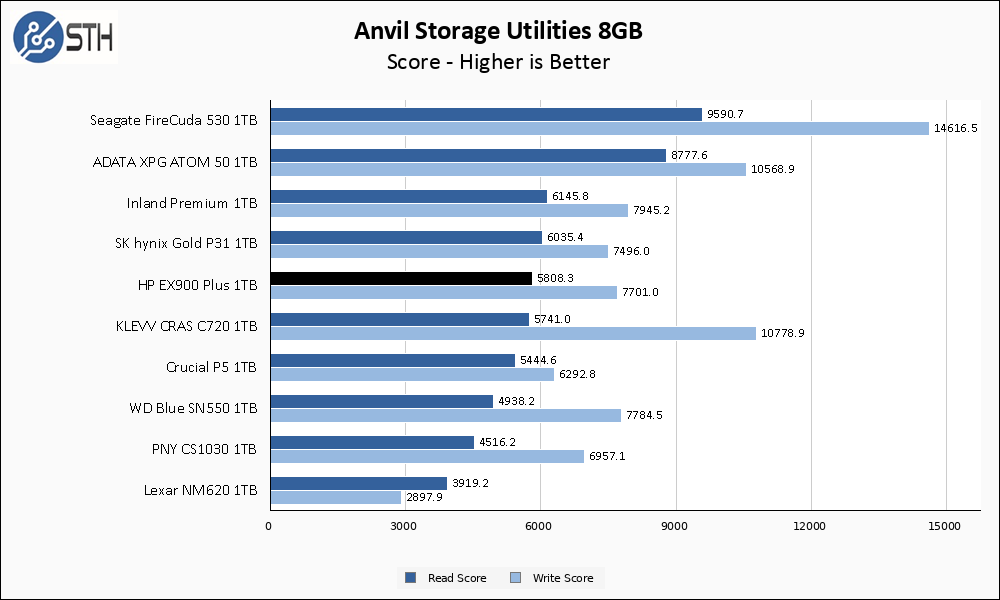
Once again the EX900 Plus improves on the larger test set. Thanks to this improvement, performance is now much closer to the Inland and SK hynix drives and is in contention with the best PCIe 3.0 SSDs I have in my benchmark database.
AS SSD Benchmark
AS SSD Benchmark is another good benchmark for testing SSDs. We run all three tests for our series. Like other utilities, it was run with both the default 1GB as well as a larger 10GB test set.
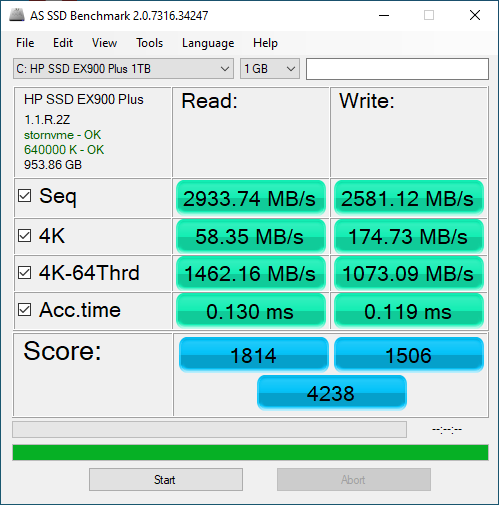
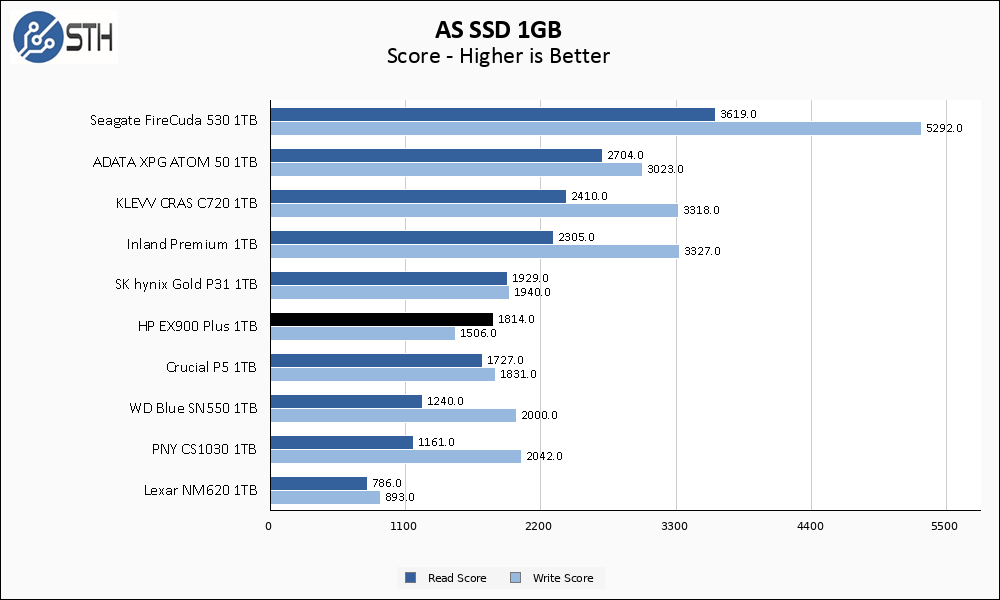
AS SSD is not the strong point for the EX900 Plus. Read performance is still solidly behind the PCIe 3.0 pack leaders, while write performance would actually place this drive as second last on our graph.
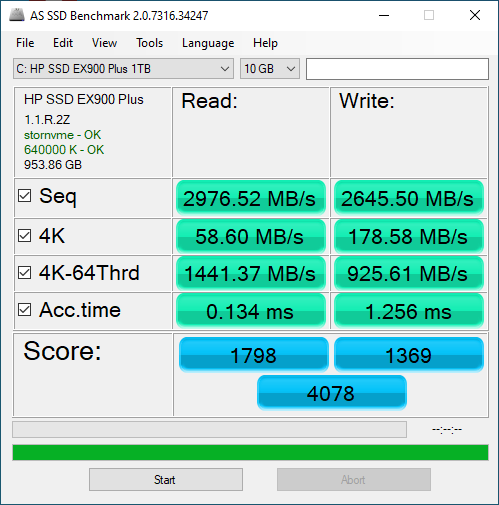
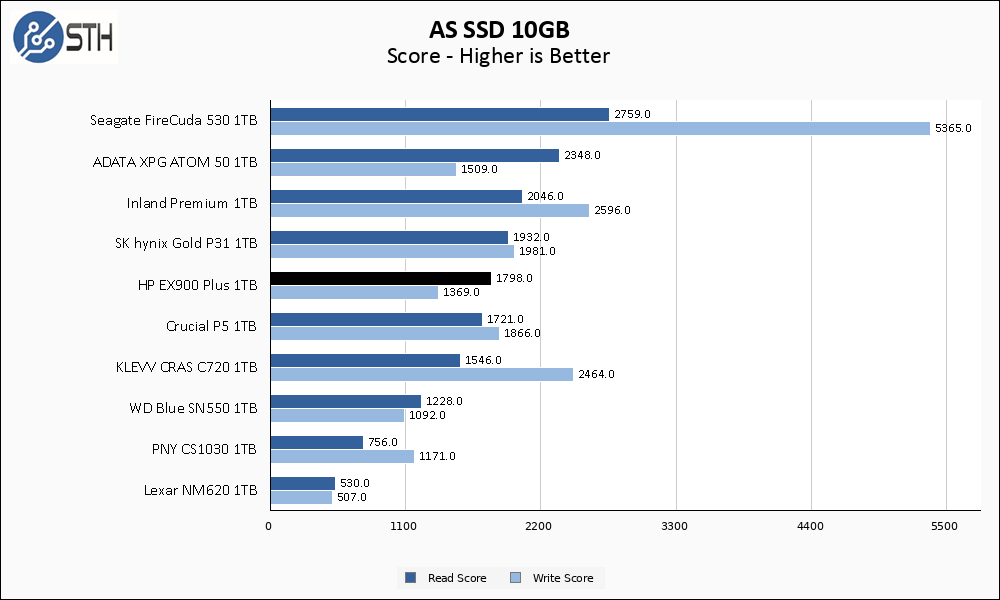
The EX900 Plus bucks its previous trend and does not improve in the larger AS SSD test. With that said, the scores here fell less than many other tested drives, allowing an improvement in the relative placement on my graph. All told the EX900 Plus turns in a good, but not class-leading, performance in the larger AS SSD test.
SPECworkstation, thermals, and our conclusion are up next.



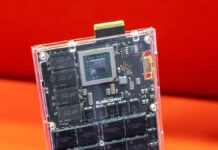
;-) Back in the day I received a documentation package from HP. It was about 100 pages 8.5×11 paper. It arrived in a stout cardboard envelope. The envelope was attached to a wooden pallet. That pallet contained no other product. I kid you not. So an unnecessarily thick chunk of plastic for a label seems the HP Way.